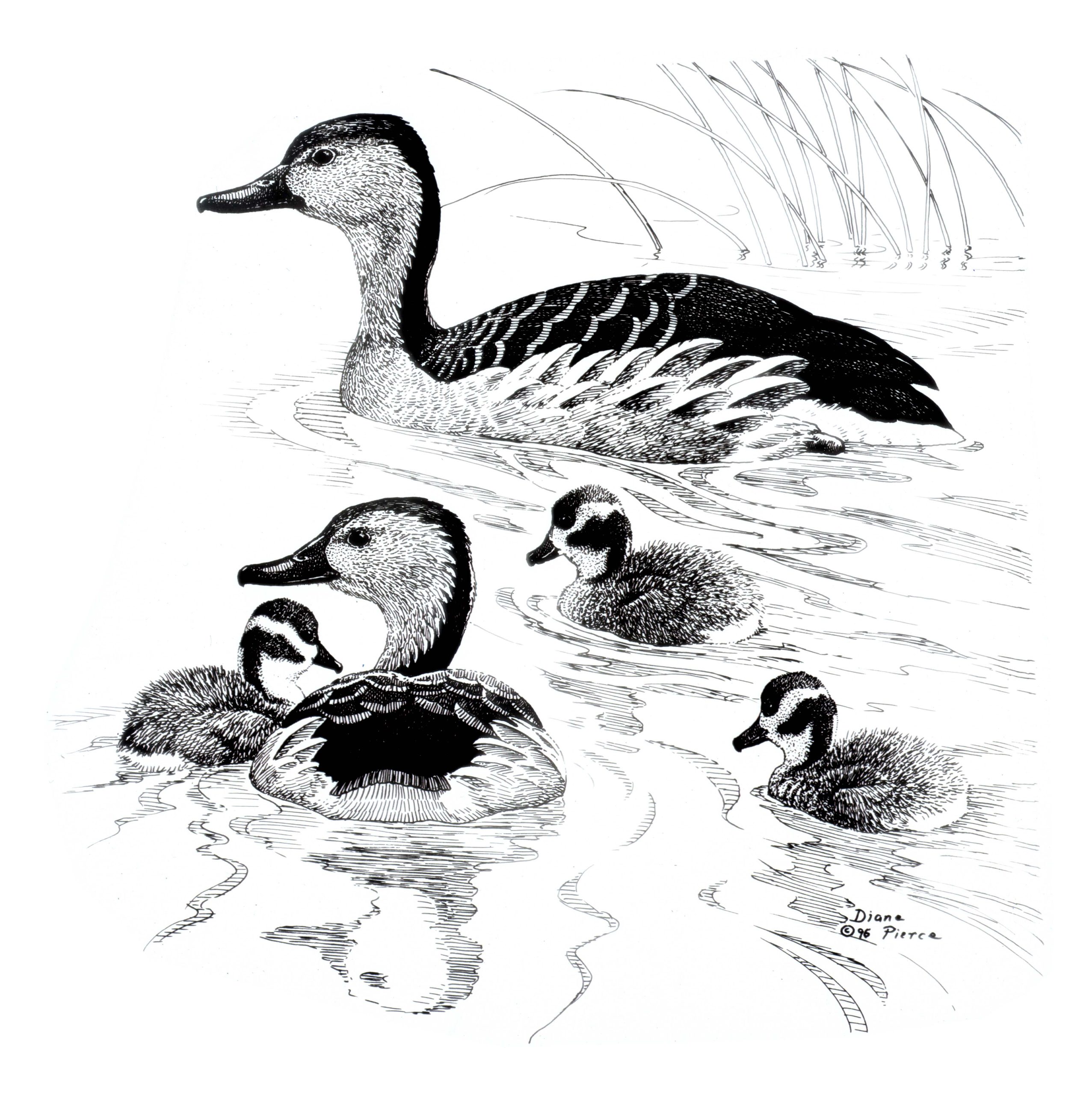Species Account
The primarily subtropical Fulvous Whistling-Duck occurs throughout Central America, California, Texas, and the Caribbean, and has extended its range to Florida in the past 5 decades (eBird 2022). Currently, they occur year-round in central and south Florida but are generally absent along the Treasure Coast, Nature Coast, and Big Bend regions with a few present sparsely in the panhandle. Florida remains as one of the few locations where this species occurs year-round (eBird 2022).
Fulvous Whistling-Ducks prefer shallow freshwater wetland habitats such as marshes, lakes, and flooded agricultural fields. Unlike their close relative the Black-Bellied Whistling-Duck (D. autumnalis), Fulvous Whistling-Ducks nest on the ground in dense vegetation close to the water’s edge or floating in standing water (Pranty 2003). Nests have an estimated average of 13 eggs/ clutch although egg-dumping frequently obscures the true clutch size. Nest site selection and mating begin in March and each pair typically has 1 clutch per season. Incubation is completed in 24 to 26 days, and young birds are fully capable of flight 55 to 63 days post-hatching (Pranty 2003).
Citation: Holmes, Z. B. 2023. Fulvous Whistling-Duck (Dendrocygna bicolor). Pages 69-73 in A. B. Hodgson, editor. Florida Breeding Bird Atlas II. Special Publication Number 9. Florida Ornithological Society, Tampa, USA.
Banner Photograph: Alexander Lamoreaux
Illustration: Diane Pierce
Updated Status
Compared to BBA I (Pranty 2003), BBA II reported a 220% increase in total breeding records of all breeding codes for Fulvous Whistling-Ducks (Table 1). The population has continued to expand as shown by the increase in the distribution of all breeding records (Figures 1 and 2). In both BBA I and BBA II, Fulvous Whistling-Ducks were found concentrated in wetlands around Orlando (Orange County) and south of Lake Okeechobee. Of the 10 recorded breeding populations in BBA I, 4 were clustered in Lake, Orange, and Osceola counties in central Florida, 1 was west of Lake Okeechobee in Highlands County, and the remaining 5 were south of the lake in Palm Beach County. In addition to these locations, BBA II reported new breeding records in the central peninsula north of Lake Okeechobee, predominantly in southwestern Hillsborough County and northeastern Manatee County, clustered in the phosphate mining and restoration wetlands (Figures 1 and 2).
For Fulvous Whistling-Ducks, the Breeding Bird Survey (BBS) survey-wide trend is 2.2 (95% CI = 0 – 5.1; n=50) and the Florida trend is 2.6 (95% CI = -2.5 – 13; n=3) from 1966 to 2019 indicating a growing population at the survey-wide and Florida scales (Sauer et al. 2020; Figure 3). While the survey-wide data are considerably smaller than the Florida breeding population and not included in Figure 3, the trend estimates do show increasing values for this species. As this population continues to grow and disperse Fulvous Whistling-Ducks are expected to take advantage of the myriad wetlands that provide suitable habitat conditions and expand their breeding range in Florida’s subtropical environment in the future.
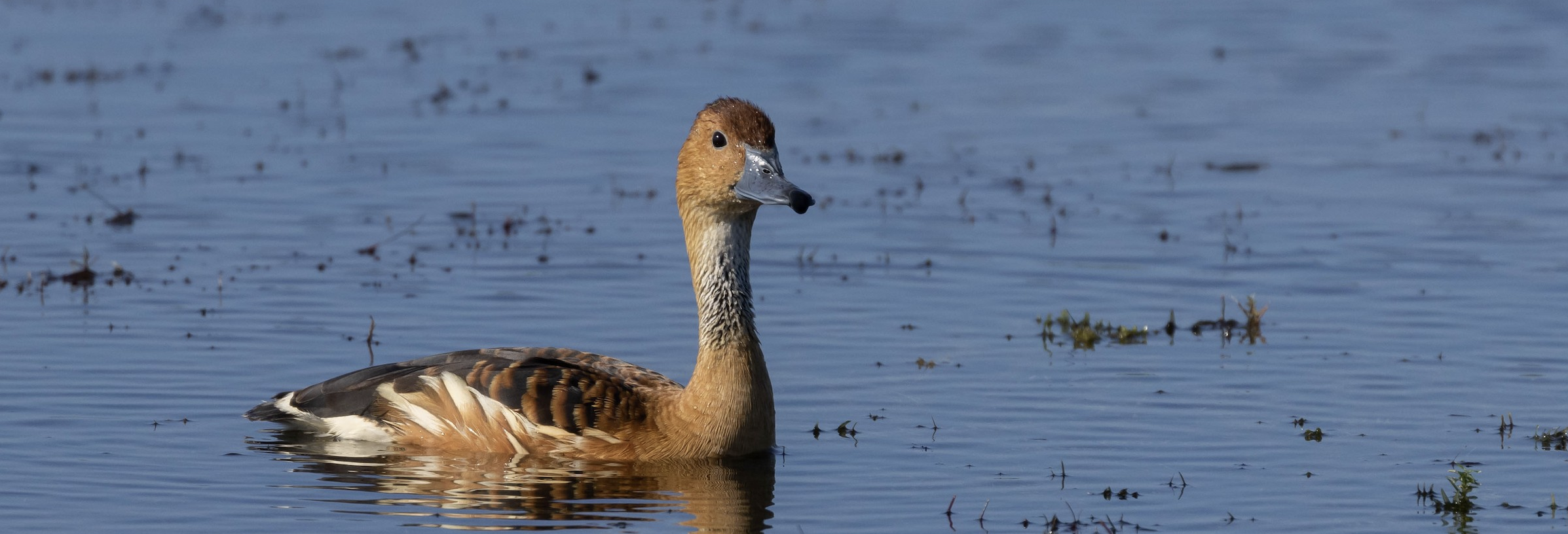
Data
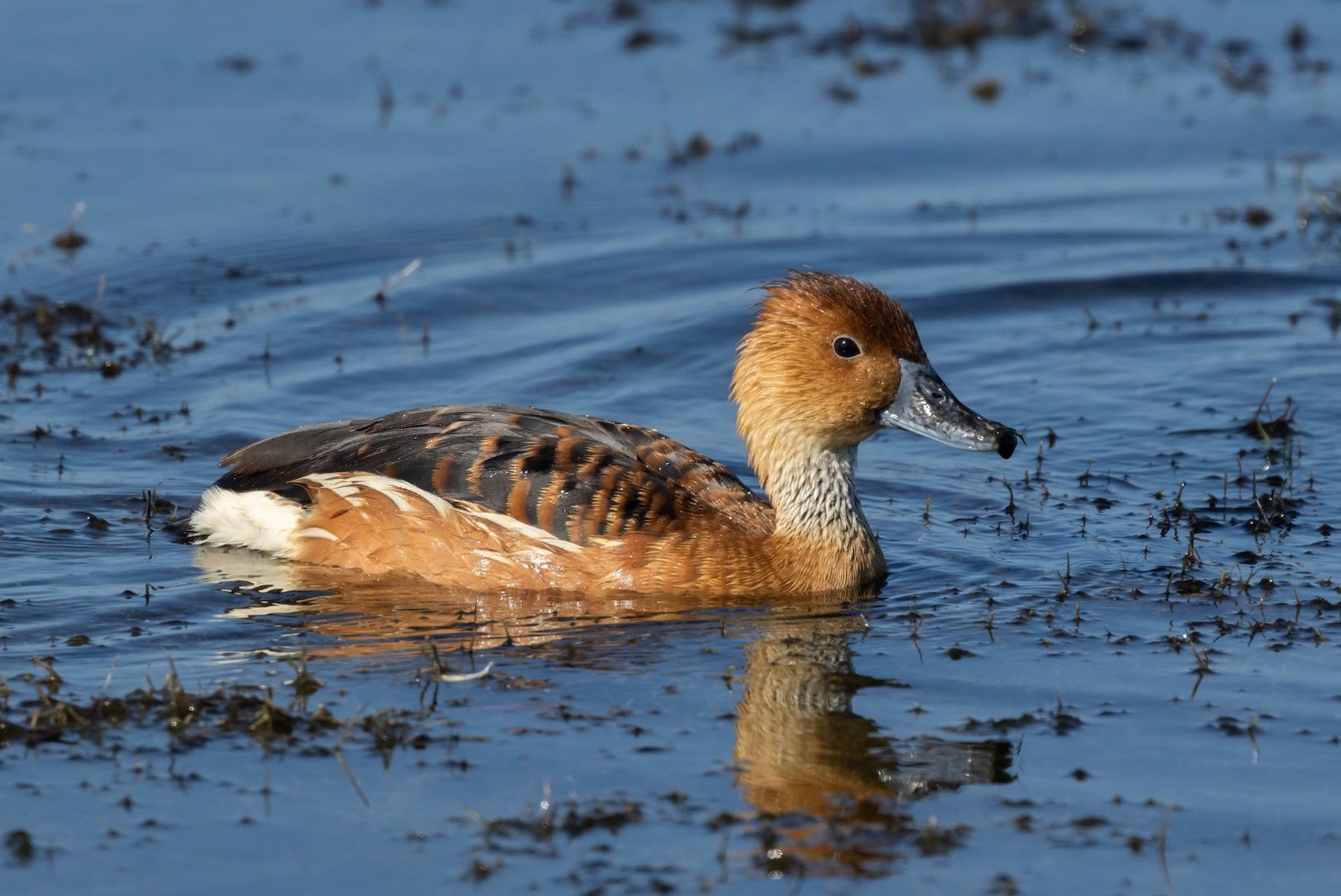
Table 1

Maps
Figure 1
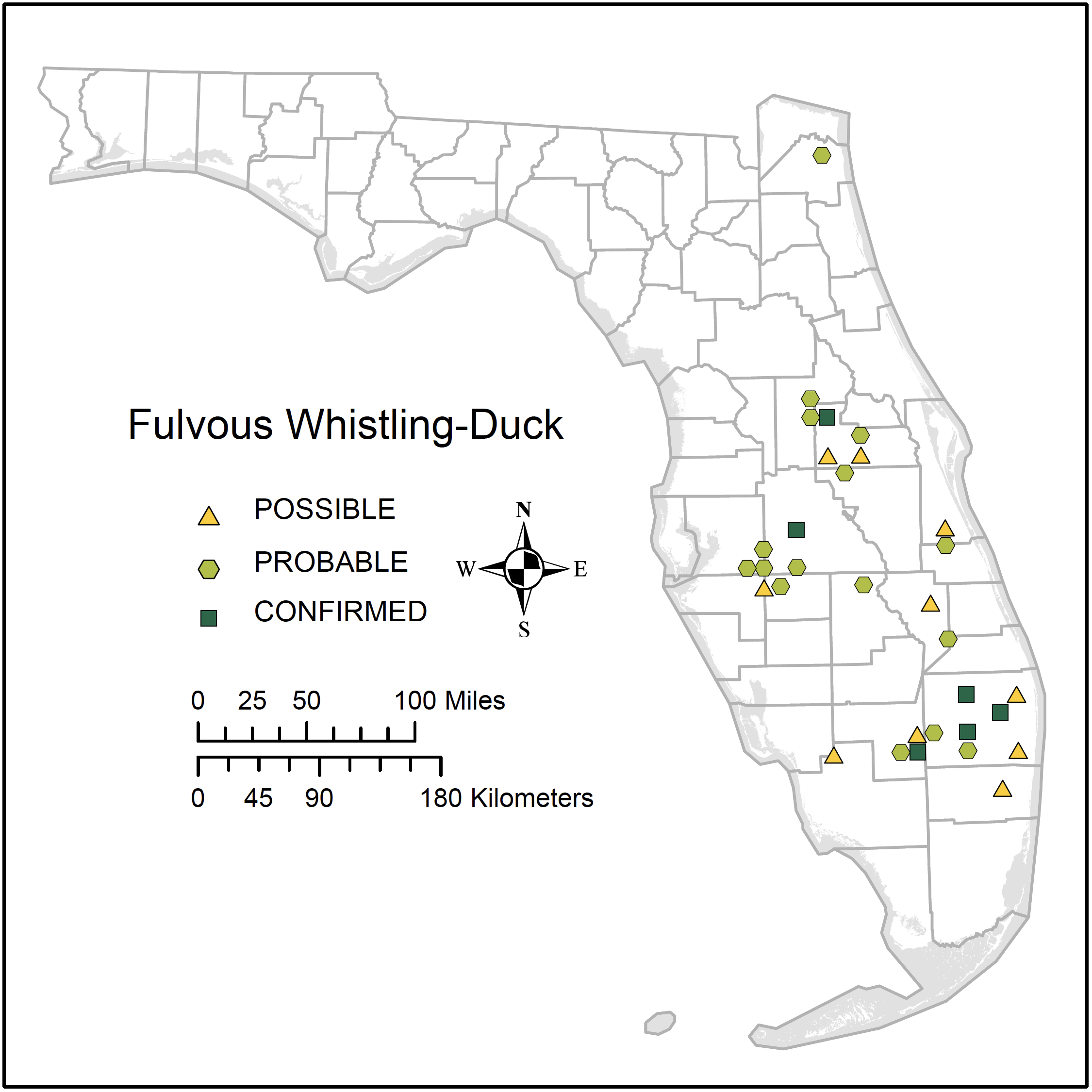
Figure 1. Fulvous Whistling-Duck quad-level distribution, Florida Breeding Bird Atlas II. Figures 1 and 2 are based on data collected across all six atlas blocks within a quad. Figure 1 is based on the highest breeding code observed in each quad.
Figure 2
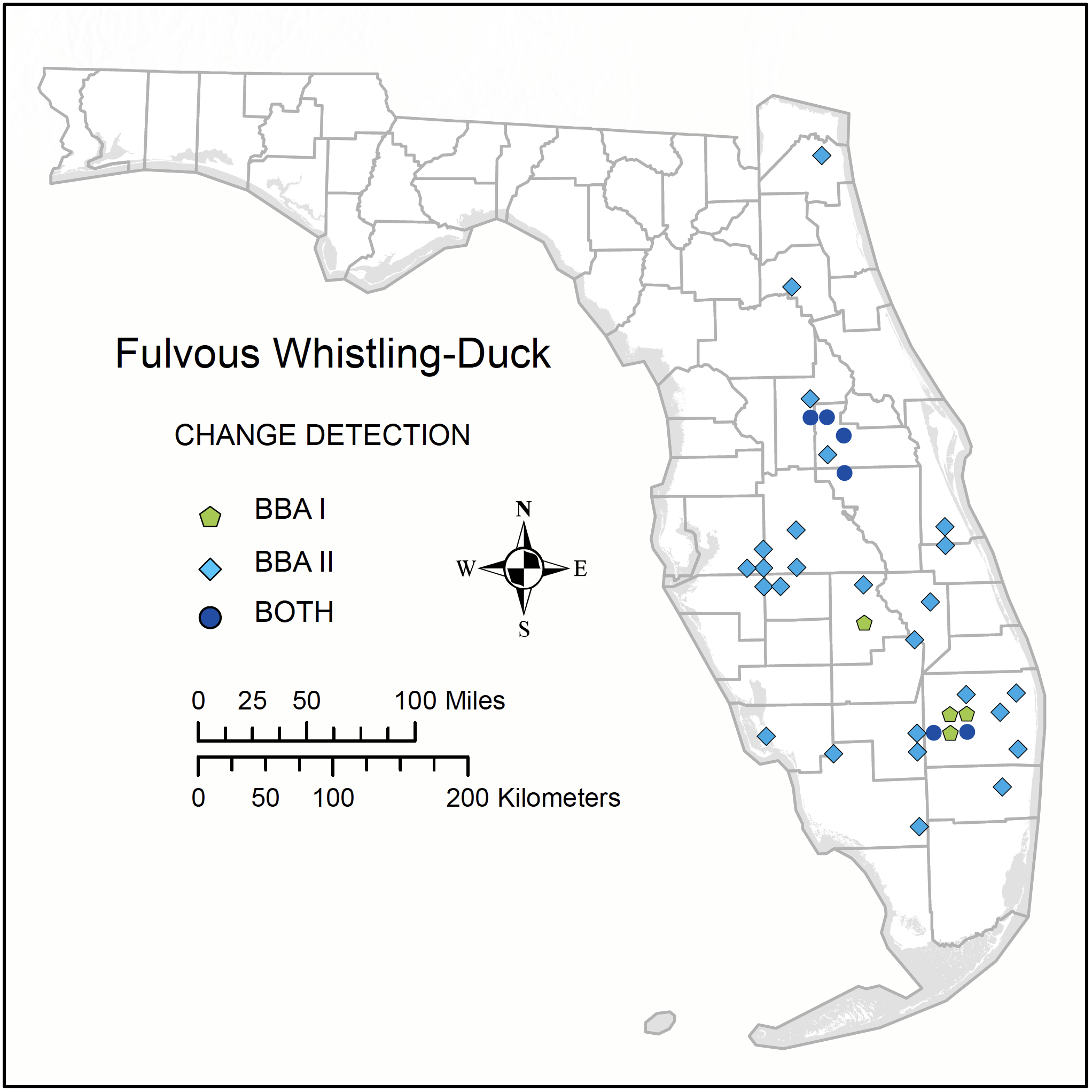
Figure 2. Fulvous Whistling-Duck quad-level change detection based on the simple presence or absence of a species at any breeding code level within the quad during each atlas.
Figure 3
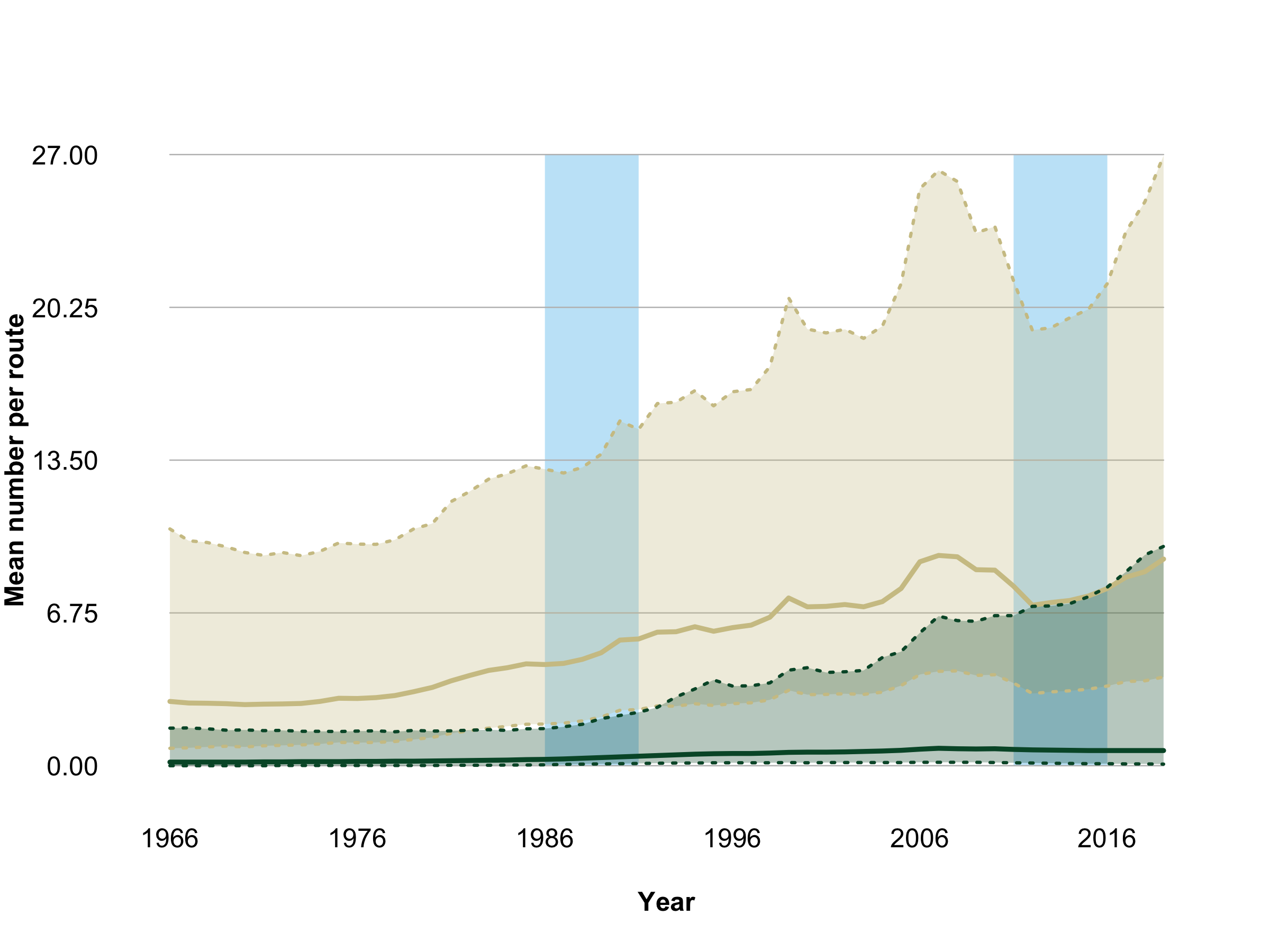
References
eBird. 2022. eBird: An online database of bird distribution and abundance [web application]. Cornelll Lab of Ornithology, Ithaca, New York, USA. http://www.ebird.org/species/fuwduc . Accessed 20 November 2022.
Pranty, B. 2003. Fulvous Whistling-Duck (Dendrocygna bicolor). In Florida Fish and Wildlife Conservation Commission, editor. Florida’s breeding bird atlas: A collaborative study of Florida’s birdlife. Florida Fish and Wildlife Conservation Commission, Tallahassee, USA. https://myfwc.com/media/19701/bba_fuwd.pdf.
Sauer, J. R., W. A. Link, and J. E. Hines. 2020. The North American Breeding Bird Survey, analysis results 1966 – 2019: U.S. Geological Survey data release. https://www.mbr-pwrc.usgs.gov/.

